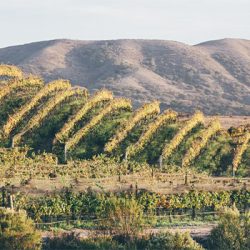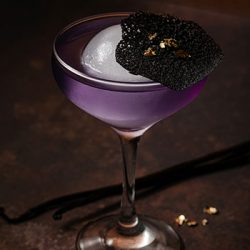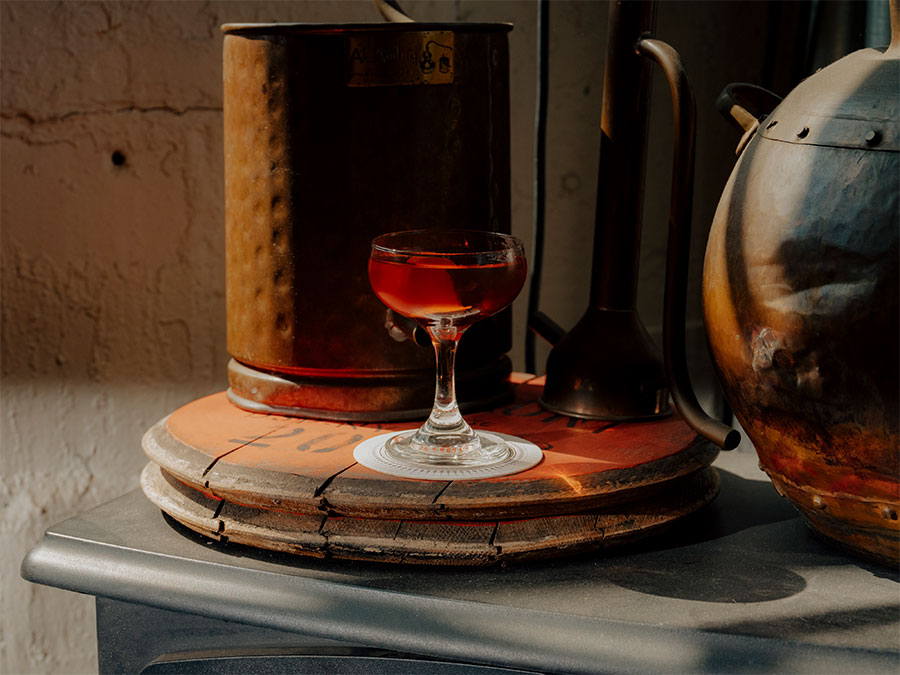

What if New York had its own style of whiskey? It was an idea that Chris Briar couldn’t get out of his head. When his Coppersea whiskey won an award from the American Craft Spirits Association in March of 2014, he kept pushing for it. “A bunch of the New York distillers had won,” he said, recalling the association’s first conference and competition in Denver. “We were chatting, and I brought it up again and they were all like, ‘Oh God, Chris’s bullshit,’” he laughed. “And I said, ‘No! We gotta do it, man. I’m gonna email you.’”
It was early days for craft spirit producers. At the time, there were fewer than 40 distilleries in New York State; today, there are almost 200. In 2014, all the New Yorkers who had entered spirits into the competition had started distilling less than seven years before, and most had just won their very first medal.
When the medals were handed out at the ACSA show, each distiller was also handed a bottle of their winning spirit, resulting in 300 distillers walking around asking each other, “Do you want to taste my award-winning whiskey?” The overwhelming response? “Of course, I do!” Soon, the group of New York distillers had gathered together and their celebratory energy helped Briar to get everyone’s attention. For the past year, Briar had been lobbying a core group of colleagues—Jason Barrett of Black Button, Brian McKenzie of Finger Lakes Distillery, Allen Katz of New York Distilling Company, Colin Spoelman of Kings County Distillery and Ralph Erenzo of Tuthilltown Spirits. He wanted to create a legally recognized category of New York rye whiskey.
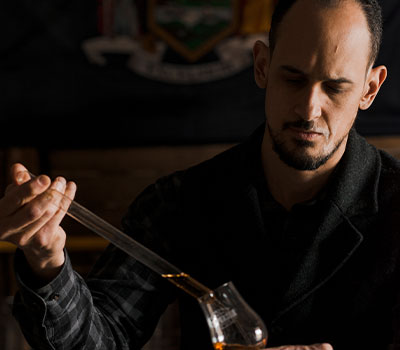

“The credibility of [our] Bourbon will always be dependent on how they do it in Kentucky and comparisons to that style.” —Chris Briar, Coppersea Distillery
Briar had founded Coppersea Distilling in 2011 and started making corn and malt whiskey before focusing on rye. “I realized early on that, whatever we do, the credibility of [a New York] Bourbon is always going to be dependent on how they do it in Kentucky and comparisons to that style,” he said. But rye? That was an open market.
Having majored in history and American studies, Briar had an innate curiosity about American folklore. He dove into the history of rye and found that, along with Maryland and Pennsylvania, New York was very much linked to the grain. “In the pre-Prohibition era, those three states were almost as well known for rye production as Kentucky and, to some extent, Tennessee, had been for corn-based whiskey,” he said. Prohibition wiped out many small distilleries and the whiskey market, post-Prohibition, was quickly dominated by larger companies that tended to focus on corn-based whiskey, called “Bourbon.”
Briar started as a brewer before moving into craft distilling, and one of the things he had loved most about the beer industry was the camaraderie. Brewers often worked together to collaborate on a beer, but Briar knew that kind of collaboration would be difficult among distillers because spirits have to age.
“You can’t just say, ‘What would it taste like if we threw a cat in that beer? It’ll be done in 30 days and if it doesn’t work, we won’t do that again,’” he laughed. “But this notion of creating a whiskey style, if we could get people on board, it seemed like a fun idea, and it was one that I started badgering the other distillers on almost from our founding.”
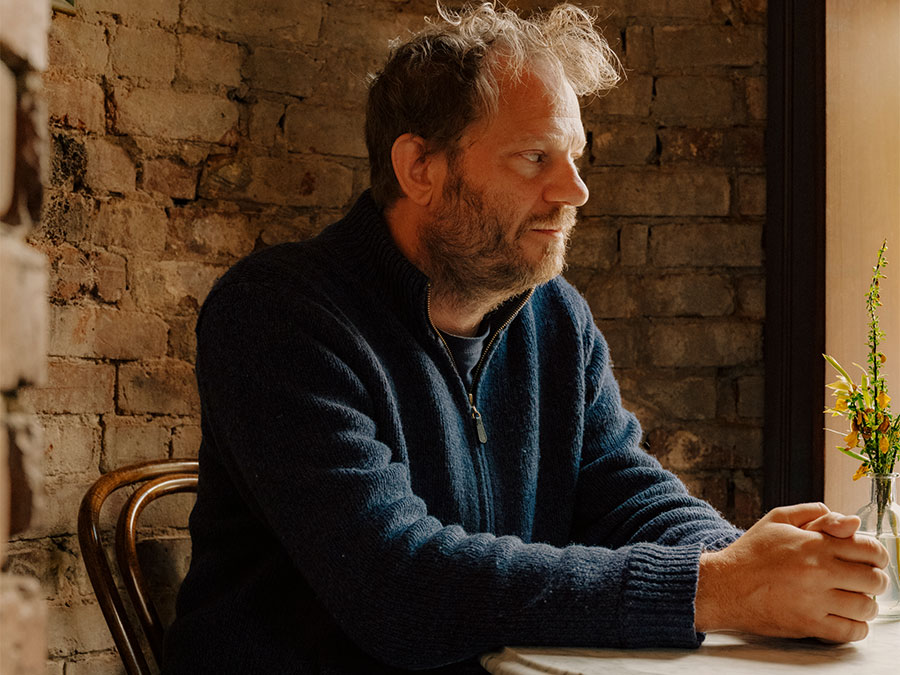

Meanwhile, Allen Katz, who started the New York Distilling Company in 2011, with father-son-team Tom and Bill Potter, had developed an interest in New York rye because of cocktails. “I always joke that at the turn of the last century, 1999, there were just four cocktail bars in New York City, and I could walk to three of them,” he said. Angel’s Share, Milk & Honey and Passerby were a 4-, 12- and 30-minute walk from Katz’s East Village apartment. This was an era when the Food Network was just gaining popularity and people were starting to show interest in celebrity chefs, searching for something that could be considered American gastronomy. For Katz, that thing was cocktails. He started to research pre-Prohibition cocktail recipes and lost or forgotten ingredients. Many of those recipes called for rye whiskey. But when he went to order cocktails made with rye at a bar, the spirit often wasn’t available.
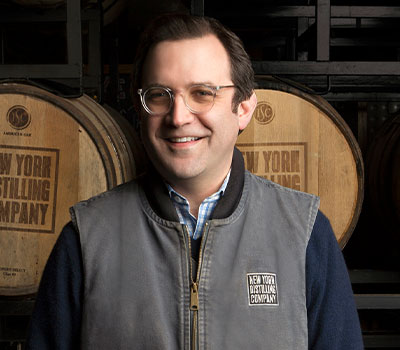

“I wanted to create a jumping off point for a rediscovery of American Rye whiskey.” —Allen Katz, New York Distilling Company
“I wanted to create a jumping off point for a rediscovery of American Rye whiskey,” Katz stated. “I love Bourbon, but…” he added, echoing Briar. “It might take more than the rest of my life to create a Bourbon of substance compared to what is already alive and well on our planet. And that’s how we derived our focus on rye whiskey. I hoped to be a bigger fish in the smaller pond.”
It took Bourbon 100 years of trial and error before it was finally codified into law in 1964. According to the TTB, Bourbon must be made in the United States from a minimum of 51 percent corn, aged in new charred oak barrels for at least two years and it must enter the barrel at no more than 125 proof. These standards were virtually universal by the time distillers decided the Bourbon name was something worth protecting. When Briar decided to create a 21st century whiskey style, he had to create the standards with fellow distillers first, then go into production. He aimed to focus the craft distillers, who had a tendency to go their own way with a wide range of styles.
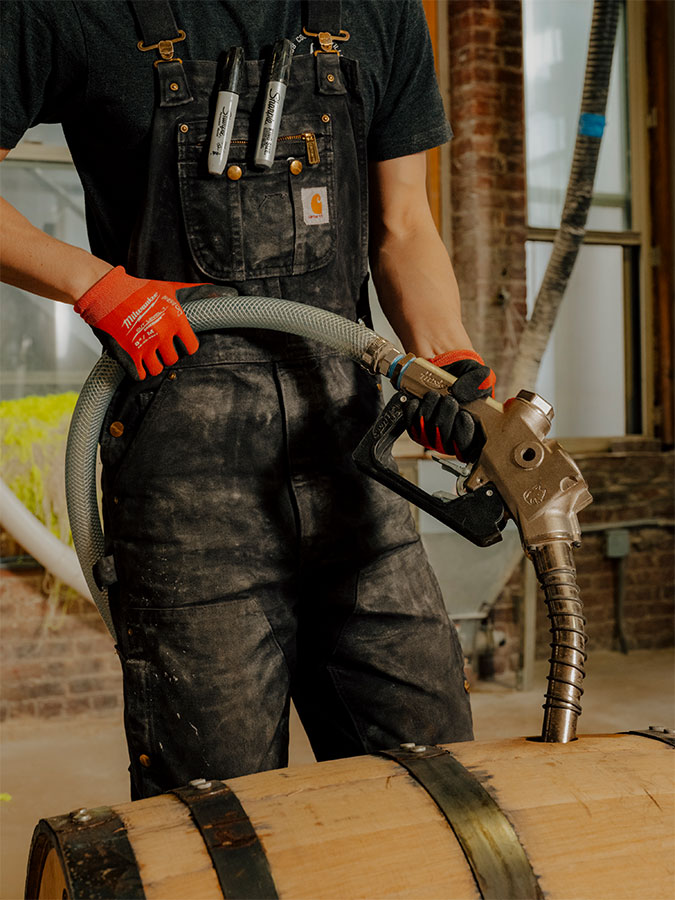

with freshly distilled spirit at Kings Country Distillery.
Briar’s initial idea was to strictly define the category. He reasoned that if Empire Rye didn’t have a higher barrier of entry than rye whiskey in general, the category wasn’t worth creating. The original proposal he sent to the group included several rules: The whiskey must be 100 percent malted rye grown in the state of New York, aged for a minimum of four years in new oak, made without the use of exogenous enzymes and bottled-in-bond (meaning that it was made by one distiller at a single distillery in one season, then aged in a bonded warehouse).
Not everyone was immediately on board. Colin Spoelman, owner of Brooklyn’s Kings County Distillery, had some issues with rye after launching his project in 2010. He found the filmy quality of its mash made it stick to the still’s heating coils, rendering them useless. Sometimes, that sticky film burned, resulting in too much smoke in the distillate. Later, when Nicole Austin, his distiller at the time, attended the Denver Craft Spirits Competition, she got excited about the category. She convinced Spoelman that rye whiskey was resurgent in cocktail culture, and it was important to be part of the Empire Rye project.
Still, Spoelman had concerns. “There was a bit about seasons that we pushed back against,” he said, “since a bottled-in-bond whiskey can only be pulled from one distilling season, one harvest.” At Kings County, he may choose to blend a five-year rye that’s “nice and barrel-forward” with a three-year that’s “a little young,” putting them together to make something in the middle. So he pushed back against that restriction. The group agreed that the rule was unnecessarily limiting and unanimously voted against it. Distillers were free to make a bottled-in-bond New York Rye whiskey, but it wasn’t required.
Brian McKenzie, who founded Finger Lakes Distillery in 2007, was an advocate for rye whiskey entering the barrel at a lower proof than the Federal maximum of 125. McKenzie puts his whiskey into the barrel at 100 proof. “Most whiskey was aged at 100 to 110 proof back when New York State ryes would have been popular [pre-Prohibition],” he said. “As far as what that does to the whiskey, as you add more water prior to aging, it adds a different extraction of the flavor from the oak. Also, when we go to bottle the product, you’re not adding much water at all.” The group agreed to set the standard at 115.
While 115 proof may not sound that much different than Bourbon’s 125, some of the distillers—like Jason Barrett from Rochester’s Black Button Distillery—had experimented with Bourbon at proofs of 125, 122, 120, 118 and 115. Barrett claimed that they all taste radically different in terms of the wood sugars, flavors and thiols that are pulled out of the barrel. And, although a lot of whiskey in America today is placed in the barrel at 124.99 proof because it is cost effective, the group agreed that they preferred whiskey under a proof of 115. Some of the distilleries even choose to go down to 100 and they have the stylistic flexibility to do that. The goal was not to constrain anyone with the rules, but to hold Empire Rye to a higher standard.
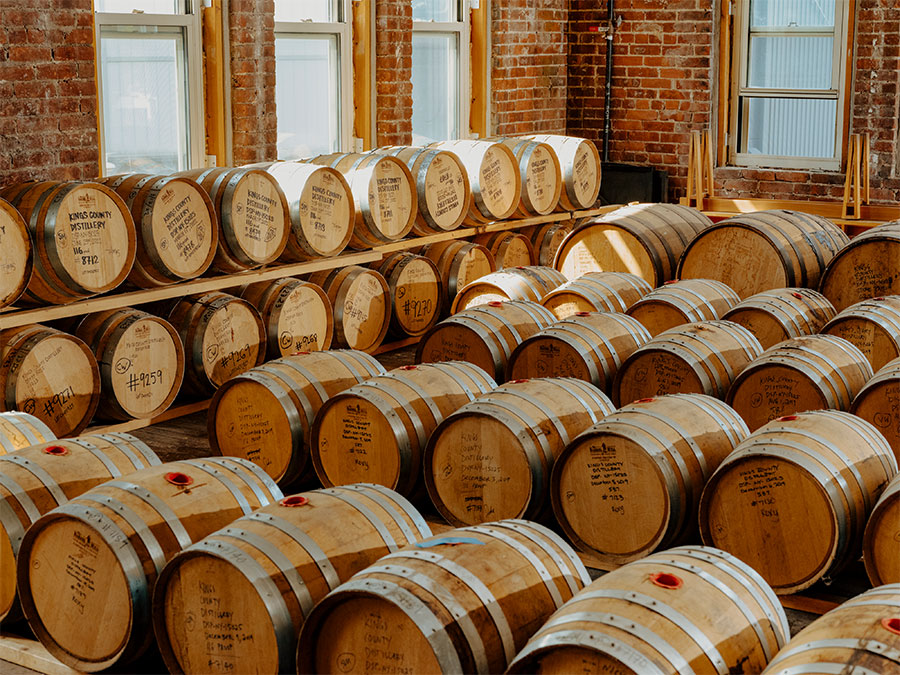

Aging requirements were also part of the debate, with some arguing for six months or one year of aging rather than Briar’s initial suggestion of four years. Some distillers hoped to recoup their financial investments sooner while others argued that shortening the aging requirement could jeopardize the credibility and quality of the category. The group compromised on a minimum of two years of aging.
It took three months of re-writing drafts before Empire Rye whiskey was defined: It must be a minimum of 75 percent rye grown in the state of New York, aged at least two years in new oak and it must enter the barrel at no more than 115 proof. In 2015, Empire Rye became a legally recognized category within the state of New York.
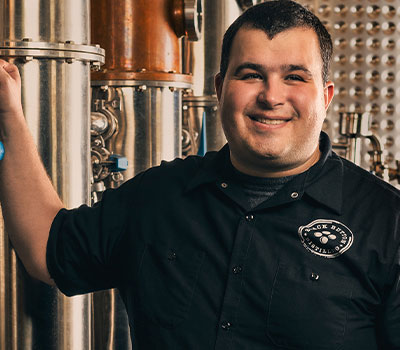

“There were fierce debates and yelling and screaming and many drinks.” —Jason Barrett, Black Button Distillery
Barrett, like others, believed the regulations left room for creativity. “As you can imagine, we’re very artistic and boisterous people,” he told me. “If the standards were so tight that everyone was just making the same thing, not only would that be problematic for the distillers, but it would be bad for the consumer as well. We don’t need fifteen people all making the same thing.”
McKenzie agreed. “The fact that there’s variety is interesting; there’s a lot of latitude to make very different styles. You’ve got some people that are making one-hundred percent malted rye and others adding some corn to it.”
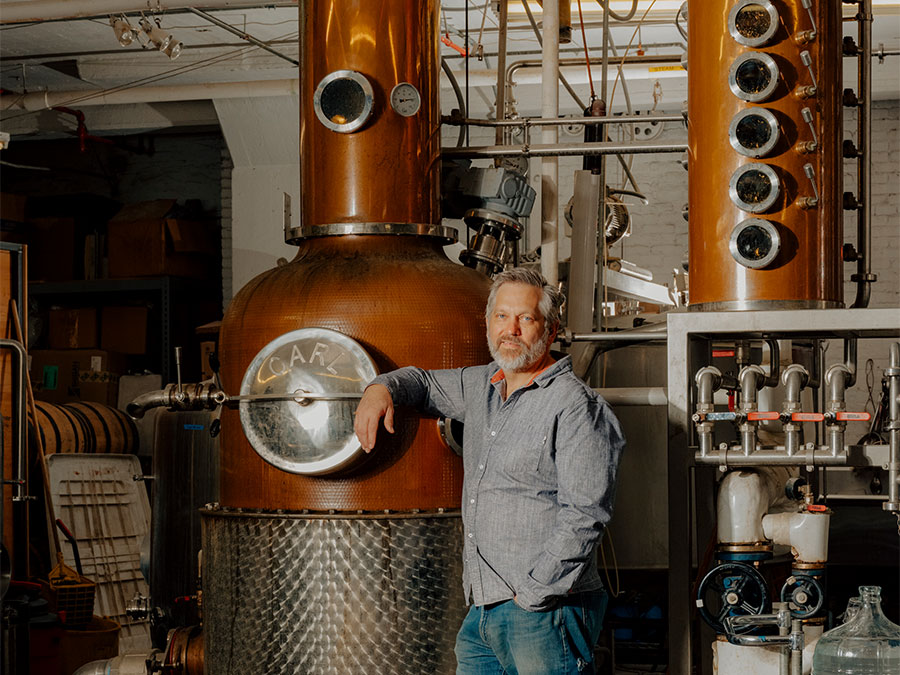

Daric Schlesselman, who founded Brooklyn’s Van Brunt Distillery in 2012, wasn’t part of the six founding distilleries but had been aware of the movement. “I’d known all the founders of the category since we started the distillery,” he said. “I sort of dismissed it and chose not to get involved; I was focused on making my American whiskey, which is a four-grain whiskey.” But in 2017, right before Empire Rye was set to be first released, Schlesselman asked about the rules. He found, coincidentally, that his whiskey fit into the category. He was able to release an Empire Rye at the same time as the six founding distilleries, making Van Brunt the first non-founder to adopt the style.
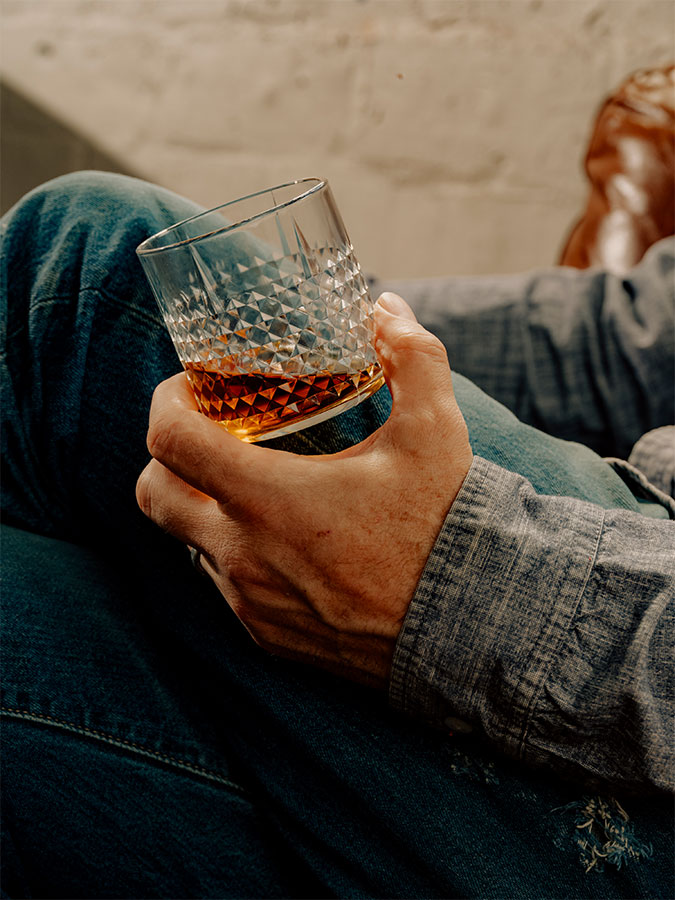

Nine years after their informal discussions began, the Empire Rye Association held its first meeting on April 17, 2023, now a legally recognized 501(c)(6) organization within New York State. Schlesselman was voted in as its first President. Having established a formal board and bylaws, the association members hope to further organize, lead and market the production of Empire Rye. Briar, who owned the intellectual property, has agreed to sell it to the organization for $1. The Empire Rye seal is a play off the image on the New York state flag, featuring Lady Liberty and Lady Justice holding stalks of rye. The seal became a legally recognized certification and must appear on every bottle. The group has not yet taken the category to the federal level of the TTB, but members are considering it in the future.
There are now 15 distilleries producing the style, with another five who are committed to releasing an Empire Rye in the coming years. We tasted twelve of them for this issue, with our recommendations appearing in our spirits database. And, according to the New York State Department of Agriculture and Markets, the state’s supply of rye is slowly increasing, from 16,700 acres in 2014, when the group started talking, to 17,900 acres today. Farmers are planting rye in collaboration with distillers, and they find themselves united by a common goal: building on the history of rye within New York State. “I think that’s the beauty of Empire Rye,” Briar said. It gives us more ability to tell our story than we would have individually.”
GROWING EMPIRE STATE RYE
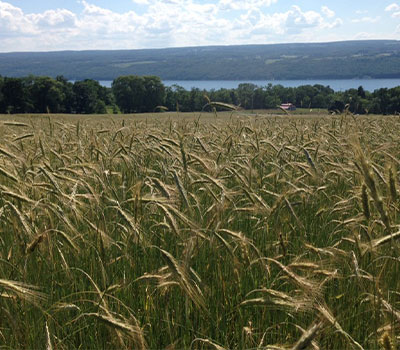

For more than 100 years, American rye has been a crop that’s been plowed under, but today the Empire Rye Association works hand-in-hand with the state’s farmers to research new rye strains. Katz’s New York Distillery, for example, produces Peterson Field Race Rye, named after their farmer, Rick Peterson who created the hybrid.
Black Button’s Barrett is impressed with what Katz and Peterson have done. “They started out with a variety of rye that was not commercially grown anymore,” he said. The hybrid project started out with 100 seeds. “The first year, you plant 100 seeds and you collect 2,000 seeds. The next year, you plant 2,000 and you get to 40,000. I believe this year they are putting in over 100 acres of it. They willed it into being over a many-year time frame.”
Barrett has since developed his own farming partnership. “When we started 11 years ago, we found a farmer who would grow New York rye for us. He was a retired farmer using equipment from the 1940s,” he laughed. “But since we only needed about half an acre, it worked as a favor. I mean, a half-acre is a good size vegetable garden. We have just committed to our 2024 harvest, and that same farm will grow 300 acres for us.”
Ryan and Alec Balas recently released Fire, Water & Grain: A Story of Empire Rye, a documentary about the creation of the category, now streaming on Amazon Prime.
Based in Los Angeles, California, Alissa Bica is the Associate Editor and Spirits Critic at Wine & Spirits. She is also a sommelier at 71 Above and co-runs the home wine tasting company, Côte Brune and Blonde. In any rare moments of free time, she writes about obscure grape varieties in the blog Off the Beaten Wine Path.
This story appears in the print issue of Summer 2023.
Like what you read? Subscribe today.



